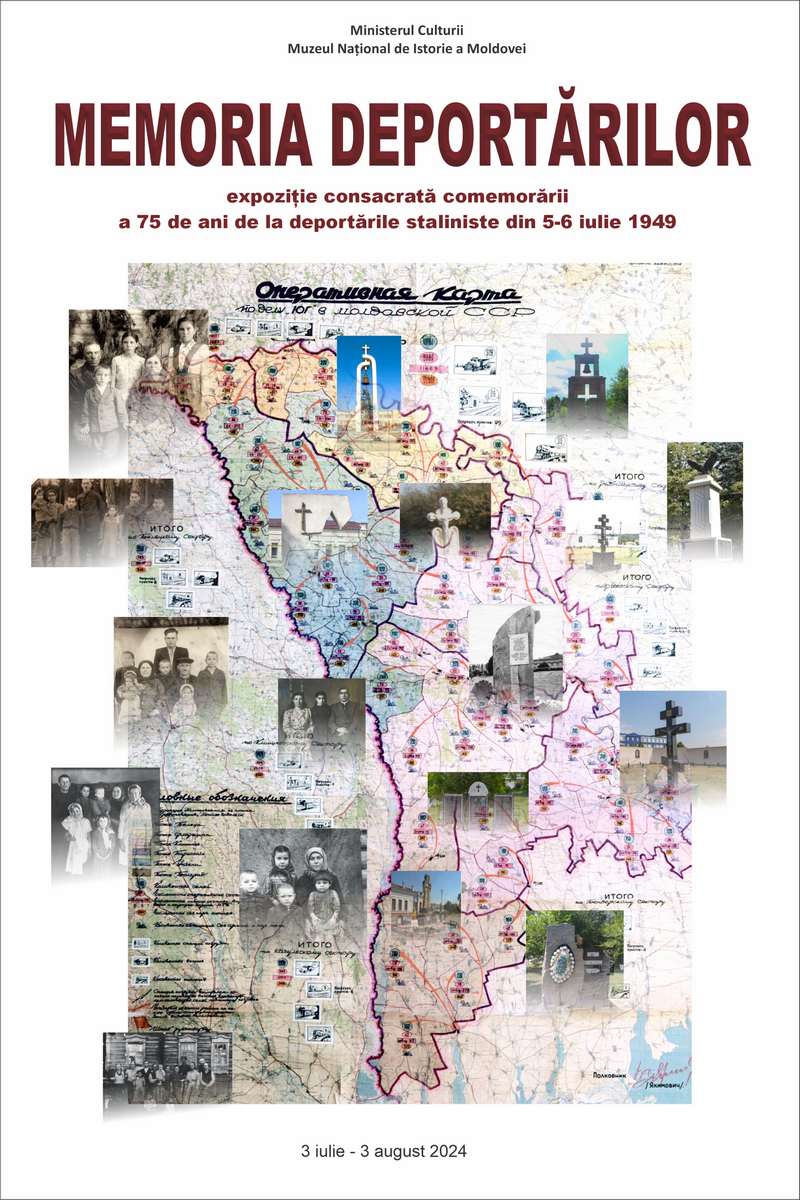 The National Museum of History of Moldova is organizing the opening of the exhibition "The Memory of Deportations" on Wednesday, July 3, 2024, at 13:15, in the upper floor hallway, dedicated to commemorating the 75th anniversary of the second wave of mass deportations in the Moldavian SSR.
The National Museum of History of Moldova is organizing the opening of the exhibition "The Memory of Deportations" on Wednesday, July 3, 2024, at 13:15, in the upper floor hallway, dedicated to commemorating the 75th anniversary of the second wave of mass deportations in the Moldavian SSR.
The exhibition reveals aspects of the history and memory of the victims of Operation "South" from the night of July 5-6, 1949, bringing to the visitors' attention documentary materials, testimonies, personal belongings, artworks, and thematic video materials. The exhibited relics elucidate the context in which the organization of the second wave of deportations took place, the transportation and relocation of Bessarabians to special settlements in the eastern regions of the USSR, as well as recent practices of honoring the memory of the victims of the totalitarian-communist regime in the Moldavian SSR.
The imposed residency regime, harsh cold, limited bread rations, exhausting labor, and schooling of children in Russian were dictated by the state-party ideology concerning the liquidation of "enemies of the people" and political myths about educating the "Soviet Man" or the "happy childhood in the USSR." The memory and oral narratives of the survivors among the Bessarabians deported on the night of July 5-6, 1949, along with the relics presented in the exhibition documenting their history, highlight the suffering caused by separation from their own homes and confiscation of property earned through hard work, alienation from their native places and forced Russification, the sudden death of those who couldn't survive the horrors of the Soviet occupation, and the decades-long imposed silence by the totalitarian-communist regime in the Moldavian SSR.
The individuals deported as a result of Operation "South" had to adapt to extreme conditions, developing new roles and social networks: through interaction with the locals and local authorities; through integration, as much as possible, into the foreign cultural environment; through learning Russian, which was declared the official language of communication in the USSR; through performing political loyalty and practicing self-censorship, which facilitated reintegration into society and substituting the status of "enemy of the people" with that of "Soviet citizen."
Today, more than three decades after the signing of the Declaration of Independence (1991), the complex and systematic valorization of the memory of the victims of the totalitarian past in the Republic of Moldova remains a desideratum of decommunization and democratization. The local memory communities in the villages and cities of the Republic of Moldova offer examples and models worthy of being followed in the direction of knowing history and memory. The symbolic dimension of commemorative actions aims to constitute one of the main forms of (re)cognition and intelligent assumption of the traumatic past for the memory of the victims of the communist regime.
The exhibition presents an appeal to history and memory as an act of symbolic justice brought to all the victims of Operation "South" from July 5-6, 1949, in the Moldavian SSR, thus contributing to the building of a European culture of memory in the society of the Republic of Moldova.
The exhibition "The Memory of Deportations" will be open for visits from July 3 to August 3, 2024, in the upper floor hallway of the National Museum of History of Moldova (Chișinău, 121A, 31 August 1989 St.).

















































